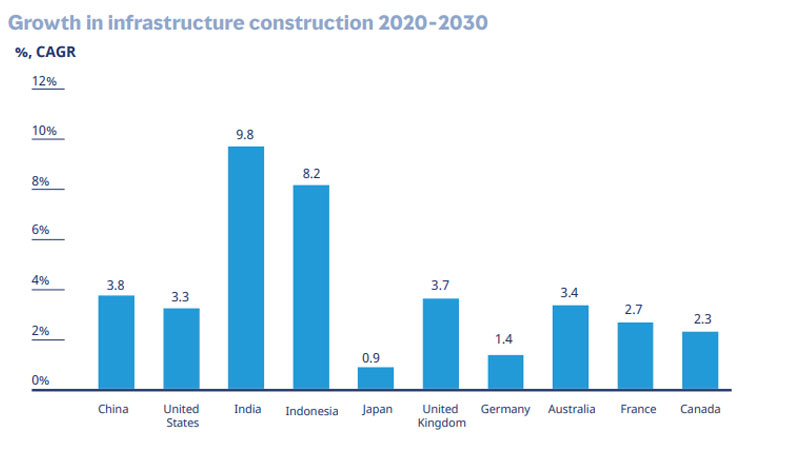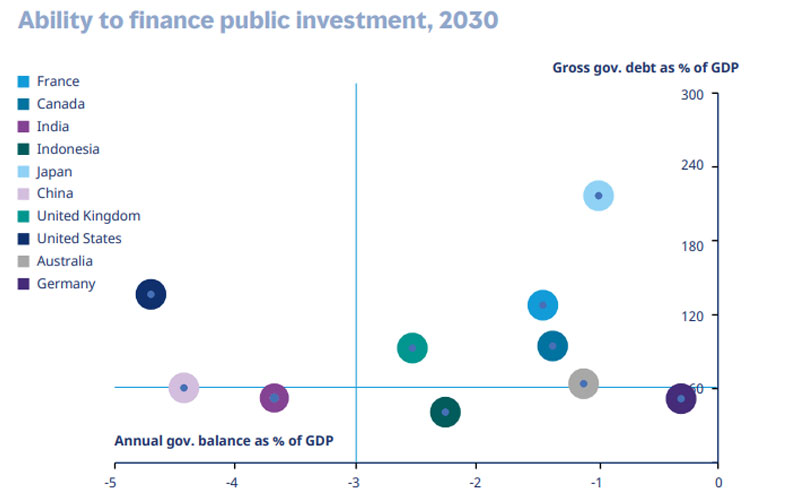In 2020, the construction industry has gone through a recessionary period in the economy. Most construction companies are facing some challenges, such as the supply chain, government policies, and international transportation. However, over the years, all these problems are becoming less and the industry has recovered from the recession. And the global construction sector is becoming an engine for economic growth. At the same time, the forecast for the growth of the construction industry says that it will be higher than that of the manufacturing industry or the service sector.

In the last 2 years, the construction industry still reached USD 10.7 trillion and it is expected to reach USD 15.2 trillion by 2030. The estimated statistics associated with the major players in this global market that contributed to the construction output suggest that Asia Pacific, dominated by China and Indonesia, is expected to grow by more than 50%; North America is expected to grow by 32%; Western Europe is expected to grow by 23%. It can be said that there are more opportunities for people to do foreign trade.

Among the growth of construction output, residential construction could bring short-term growth. In North America, huge levels of excess household savings have built up to advance economics and reached more than 10% of the US GDP. On the other hand, infrastructure construction would be the fastest growth section over the period to 2030. The infrastructure projects would be mainly driven by the government. It can be considered that there would be much more projects in the firm for construction companies to bid competition.

Source : Oxford Economics/Haver Analytics
Meanwhile, on the contrary, risks coexist with opportunities. There would be near-term risks and long-term risks which need to be considered. While doing foreign trade, there are still restrictions that existed, which would affect inland transport and international transport. Then, the supply chain has already caused some shortages of construction materials and considerable price rises in the key market, such as lumber. Labor shortages also materialized in markets especially reliant on migrant labor due to the international travel restrictions. And the long-term risk would mainly be the economic risks. It is related to the government’s ability to manage debt levels in the context of increasing demands on public spending brought about by demographic shifts.

Source : Oxford Economics/Haver Analytics
In general, it will be more opportunities for trade companies in the construction industry to develop their businesses and projects overseas during the next few years. However, it is necessary to consider how to avoid those risks to ensure sustainable development.

